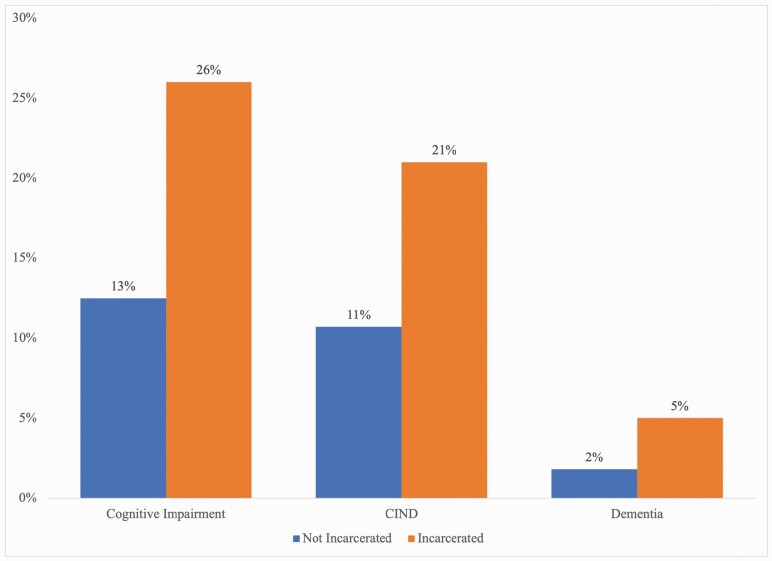Figure 1.
Prevalence of cognitive impairment. Notes: Weighted means by incarceration status for cognitive impairment. Missing data were imputed using multiple imputation by chained equations. N = 8,021, N (FI/I) = 573, and N (NI) = 7,448. Following Langa et al. (2017), cognitively impaired (either with or without dementia) are those with TICS-m scores ≤ 11. Those with scores in the range 6 < TICS-m ≤ 11 were classified as CIND, and those with TICS-m scores ≤ 6 were categorized as dementia. All differences are significant at the 0.01 significance level or lower. FI/I = formerly and currently incarcerated; NI = nonincarcerated; TICS-m = modified version of the Telephone Interview for Cognitive Status; CIND = cognitive impairment—not dementia.

